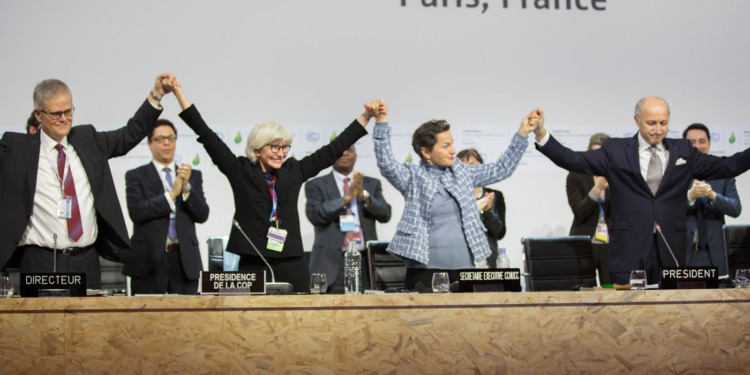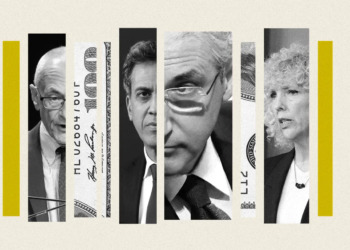Dubai’s COP28 coincides with many climatic firsts: Antarctic sea ice tracks at record lows and record sea surface temperatures continue apace while July was the hottest month ever measured.
The conference, framed by these anomalies, also marks two firsts that will be front and centre come November: there will be the first formal deliberations to make loss and damage arrangements reality after the landmark agreement at COP27 to establish a funding mechanism, and the first Global Stocktake will reach its conclusion.
Yet while both processes are procedurally novel, the dynamics guiding negotiations will be anything but. Instead, the positions of parties’ are more than likely to rest on historically embedded frictions, cast along lines of equity and distributive justice that precede the Paris Agreement and have indelibly shaped its implementation.
Loss and damage, for example, constitutes a vital, long gestating dimension of climate justice, appearing for the first time in UN climate negotiations in 1991, when the Alliance of Small Island States proposed an insurance scheme to compensate countries vulnerable to rising sea levels.
Loss and damage forms a third dimension of climate action alongside mitigation and adaptation. It recognises that certain impacts of climate change cannot be addressed by the other pillars. The COP27 decision recognised a need for financial support for countries vulnerable to these impacts, a decision built on the back of decades of incremental progress.
What the decision hasn’t resolved is who will pay into the fund or the recipients. These questions are likely to be highly contested, cutting across political fault lines that have affected deliberations before the term was even included in the Paris Agreement.
Debates range from differing interpretations of culpability to concerns by developed economies about legal implications. Wording of Article 8 on loss and damage, kept ambiguous to help progress the Accord, hasn’t helped to allay these issues.
Another potential source of friction is whether China and India should be obliged to contribute to the fund as globally significant emitters. That issue is further complicated by United States special envoy on climate change John Kerry’s insistence that the US will not contribute.
These debates bubble while work by the transitional committee established at COP27 to design funding arrangements continues.
While the funding arrangements are unlikely to be resolved by COP28, the provisions are vital for Small Island Developing States, among them Pacific Island communities whose vulnerability to climate change has only compounded over the past three decades.
Related articles: COP: What Is it Exactly and Why Is COP27 so Important? | Engaging the Arab Youth in Climate Action | EU Calls World to Climate Action: Phase-Out Fossil Fuels Ahead of COP28 | Oil Baron Elected President-Designate of COP28: How Has the UN Allowed This? | COP28: What’s the Real Plan? | UAE, COP28 Host, Haven’t Reported Methane Emissions for Almost a Decade
The other first at COP28, the first Global Stocktake, is an assessment of collective progress on mitigation, adaptation and resilience and finance measures.
The Stocktake is intended to be the basis for stronger global ambitions in the next round of climate targets, expressed through Nationally Determined Contributions.
Its results are not expected to yield many surprises: drawing on assessments already made by the Intergovernmental Panel on Climate Change and UN Environment Programme, the UN Framework Convention on Climate Change has released its technical synthesis report. noting that current pledges are well off track in relation to the Paris Agreement’s objective of limiting global warming to 1.5 degrees Celsius.
This is also true of finance. The target enshrined in the Paris Agreement — USD$100 billion annually by 2020 for mitigation and adaptation from developed to developing nations — has not been met and is among the most visible and enduring symbols of unrealised distributive justice.
As the COP28 President has implied, it is also a fundamentally destabilising force in the push to raise global mitigation ambition, eroding trust where the pledge-and-review design of the Paris Agreement requires it.
COP27’s mitigation agenda was hindered by stasis over climate finance, while the mid-year Bonn Climate Change Conference, an important step on the road to COP, was brought to a near-standstill by the insistence of the Like-Minded Developing Countries bloc that climate finance shortfalls be addressed.
However, fixating on the quantum of the climate finance target alone risks overlooking the distributive imbalances that make these public flows so important for developing economies.
The current macroeconomic environment is one such source as rising debt characterised by higher borrowing costs and reduced fiscal space are borne disproportionately by developing economies.
A particularly acute example of this is found in the fiscal realities facing the 37 Small Island Developing States, of which Pacific Island Nations are part. Between 2016 and 2022, climate finance totalled just USD$1.5 billion while 22 nations paid more than $26 billion to external creditors.
The costs of decarbonisation are also higher for developing economies, particularly for clean energy uptake, complicating the COP28 President’s push to gain global support to triple renewable energy capacity.
In what has been dubbed the ‘climate-investment trap’, low and middle-income economies, with the exception of China, face capital costs between two and three-times higher than industrialised economies for clean energy projects.
This is also true for Southeast Asia, one of the only regions where capital costs for clean electricity utilities can exceed those powered by fossil fuels. High capital costs are often linked to local conditions, policy uncertainty, inadequate regulatory frameworks and market issues. Amid an environment of rising interest rates globally, a product of monetary tightening, these costs are being further exacerbated.
The scope and depth of these challenges — along with other barriers inhibiting the flow of private capital into emerging economies — indicates that increased financial flows alone are no panacea.
However, given the urgency of reversing emissions trajectories across developing nations — those of Southeast Asia in particular — that are projected to account for a high proportion of future emissions, there is a significant need and opportunity to channel affordable public finance in the short term in ways that crowd-in private finance while reducing capital costs.
Analysis by Climateworks Centre addresses some of these interventions including the use of concessional finance to anchor and cornerstone green bond issuances and the strategic deployment of public finance in the form of credit enhancement provisions and de-risking instruments.
Despite these needs, clean energy investment in developing economies, with the exception of China, has been essentially flat over the past four years..
Southeast Asia is no exception, having received under 4 percent of total clean energy investment in emerging markets last year, a sum representing only a 7 percent increase over inflows in 2015. The region also had among the lowest share of financing from multilateral development finance institutions tasked with providing concessional capital.
In this environment of macrofinancial and economic flux, it is likely that the spectre of climate finance will continue to unsettle the balance between shared responsibilities and increasingly divergent capacities to respond and transition as COP28 nears.
While efforts to reform global climate financial architecture are gathering momentum and suggest a promising path forward in Dubai, they should complement — not replace — bigger commitments by industrialised economies.
Collective action by multilateral development banks, governments and the private sector is required, especially as the post-2025 climate finance target — which will likely shift the cost from billions to trillions — comes into view.
After modest progress on advancing the mitigation agenda at COP27, taking measures to bridge these divides will be a vital condition of restoring the trust needed to turn the first Global Stocktake into action.
— —
This article was originally published by 360info™.
Editor’s Note: The opinions expressed here by the authors are their own, not those of Impakter.com — In the Featured Photo: The first Global Stocktake on the Paris Agreement, adopted in 2015, is set to take place at COP28. Featured Photo Credit: UN Climate Change.










